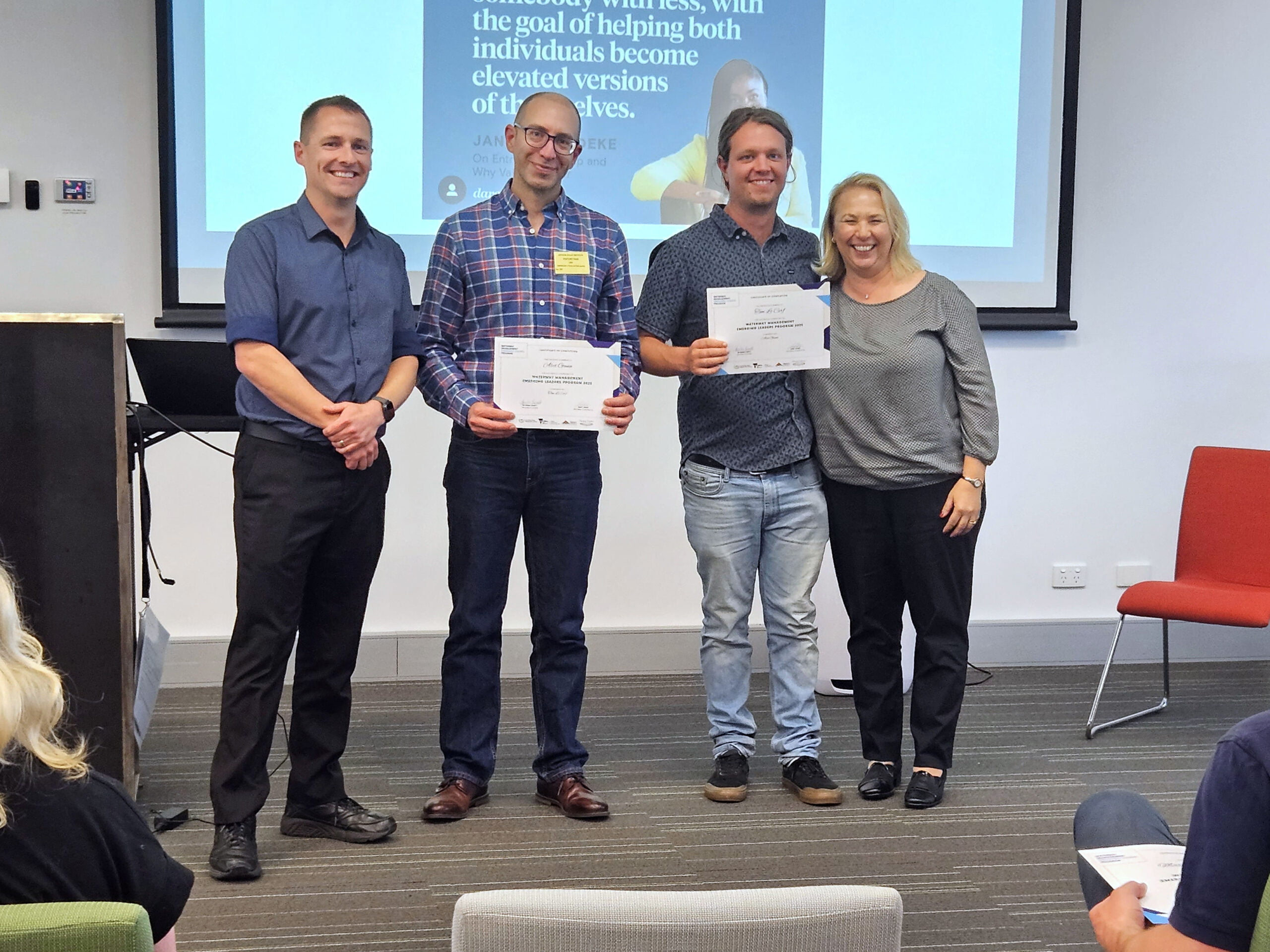Mentor: Alex Gunn — Department of Environment, Energy and Climate Action
Mentee and Author: Tom Le Cerf — Melbourne Water
Start with why
I was wanting an opportunity to focus on a single project, and to develop strategic thinking to address the underlying issue that takes a lot of his time. My role often takes me from issue to issue and I wanted to make meaningful progress on the big idea.
Alex wanted to meet people in the water industry outside of his usual network, and to try to help with a project which was well beyond his experience. He expected to learn a lot from Tom about his work and his organisation, as well as from the program more broadly.
The big idea
The concept is simple: that drainage and environmental outcomes are not independent but interdependent. Ongoing targeted maintenance may prevent the need for large scale significantly destructive drainage intervention. Our approach was to:
- Review existing documentation within the organisation on process, risk, and management objectives.
- Work with experts to strengthen the case for a more balanced approach. This was done through a series of investigations that brought together both internal and external staff across a range of disciplines such as hydrology, hydraulics, vegetation management, botany and zoology.
- Focus on deepening the understanding the issue and developing the ability to communicate complex ideas simply.

Where we got to
- A clear focus and vision has been developed to continue to develop the project in the context of my role.
- We developed a strong understanding of legislative and policy drivers. One of the key concepts from the Victorian Waterway Management Strategy is that benefit of intervention should outweigh the costs/risks.
- Key concepts for communication were refined to help build internal support for adoption.
- The major task which is still ongoing is defining the benefit of intervention (flood risk reduction), as well as the potential impact and effectiveness of interventions. Management of reeds such as typha sp. and phragmites is complex. These plants are highly resilient and there are wide ranging views of the best way to manage and when intervention is appropriate.
- The impact of these reed species on hydraulic performance is also variable. In low gradient channels they slow the flow considerably, increasing flood levels. On high gradient streams the vegetation is important in maintaining geomorphic stability.
- Ecologically, both these species have a tendency to dominate an ecosystem, which can reduce biodiversity. In the Koo Wee Rup flood protection district some of the most biodiverse drains were those that had low levels of intervention rather than no management.
- A draft tool is being developed that enables more consistent, simpler navigation of complex issues and work is still underway refining some of the inputs.


When it came to the graduation event in November we decided the best way to communicate our work together was through role play, with uncompromising engineers, red tape and acronyms demonstrating one way to go about addressing drainage issues. This was then contrasted with a more collaborative, nature-based solution to the drainage issue being addressed. Audience participation made our role play very funny, but also impactful as the message about working with, and not against nature, was made very clear.

Apply Now for 2024!
Applications are now open for The Waterway Management Emerging Leaders Program in 2024. The Program is a structured mentoring program focusing on improving the on-ground delivery of current Victorian riparian restoration projects. This Program provides an opportunity for the most effective approaches to be shared and adopted between all those working in waterway management across the State.